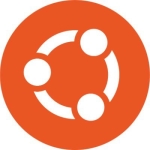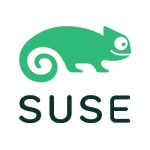Oracle Linux is basically Red Hat. It's the same. Oracle took the CentOS project, which is Red Hat, and made its own enhancements. They added something they call 3DBear, which is their proprietary technology. They call it the Unbreakable Enterprise Kernel (UEK).
Oracle took Red Hat, stripped a lot of the software that was not needed for Oracle, which made Red Hat much smaller. They optimized the UEK for their Oracle database applications.
A customer who is planning to have an Oracle database and is looking to see whether to choose to go with Oracle Linux or SUSE Linux or Red Hat, the best option for them would be to go with Oracle Linux because it's the same vendor.
Oracle Linux for Oracle databases is the top. There's no doubt whatsoever. However, if you are going to use it for anything else it's going to be a mess, because many packages will not be supported by Oracle.
For example, I was helping an organization back up various Oracle Linux servers using various kernel versions and various distribution versions. The software that I used for backup requires some packages to be pre-installed into the Oracle Linux machine from the distribution itself, but one of the packages was not available from the Oracle repositories. Because it's a Linux machine, I can manually download this package and install it myself. But the problem with that is that Oracle will void the whole warranty if I install a package from a third-party repository.
If you are going to use Oracle Linux for anything other than running Oracle databases, you will most definitely run into a bottleneck situation in which some packages that are needed, you will not be able to download. And, if you download and install them, you will void your contract, which nullifies the point of you getting Oracle Linux in the first place.
Oracle Linux has a particular use case, not like SUSE, or like Red Hat.
With SUSE, and Red Hat, you can use them for almost any use case, and you can even install Oracle inside both of them, but you can't do the same with Oracle Linux.
Oracle Linux is built for Oracle databases. It doesn't make sense for me to get Oracle Linux and install the MySQL database. Even though MySQL is an Oracle product, it doesn't make sense. If I am not going to using Oracle databases then I shouldn't go with Oracle Linux.
Oracle Linux needs to support more packages. I understand that they stripped down CentOS and Red Hat, but Oracle is an organization that will be paying the price of Red Hat making CentOS, CentOS-3 as well.
I understand the idea of making the Linux distribution just optimized for their Oracle database, but I'm not going to get Oracle Linux because it works well only with Oracle products.
I will most likely have a diverse infrastructure. So instead of going with Oracle Linux, I will go with SUSE Linux or Red Hat. Why? Because Red Hat, for example, has support for many, many packages. Instead of me going to get Oracle Linux for the Oracle database and Red Hat for the remaining workloads, why not get Red Hat from the beginning.
I have been using Oracle Linux for two years. It is still pretty new to me.
I have used Oracle Linux versions 6, 7, and 8.
Oracle Linux is a stable solution.
When you take Red Hat and strip several applications off of it and optimize it to work with Oracle databases, Oracle Linux is the most stable Linux.
Technical support was great. I didn't deal with them directly. When I had an issue, I was interacting with a team who was administering the Oracle Linux environment, and when we ran into hiccups and we needed support from Oracle, they would initiate a ticket, and Oracle would respond and would provide support.
The installation is comparable to Red Hat, and CentOS. It's not difficult.
In terms of the configuration, it won't take more than 30 minutes to install.
However, because it's an Oracle Linux, there are Oracle databases involved, which means there are steering committees. There will be complications in the implementation that are not related to the actual installation of the product itself. This will delay it by several days.
In general, I would not recommend this solution, but if you are going to be running Oracle databases, then yes, I would recommend Oracle Linux.
If you are going to be running Oracle-based solutions, or if your data center mainly is controlled by the Oracle Corporation then yes Oracle Linux would be the best choice.
You shouldn't go with Oracle Linux if you're not going to be using Oracle products.
As I am not particularly interested in Oracle, I would rate Oracle Linux a seven out of ten. If however, I was, then I would rate it a ten out of ten.
















